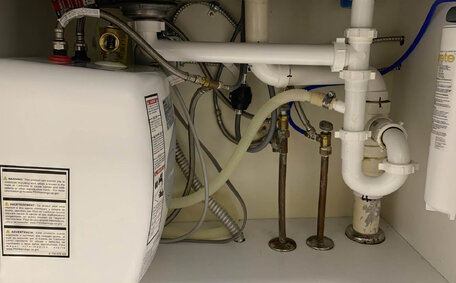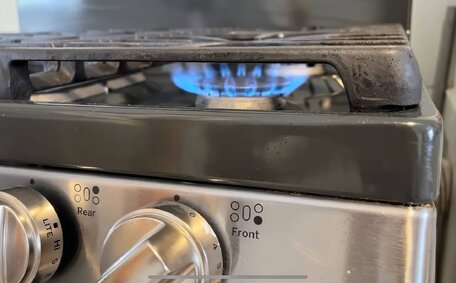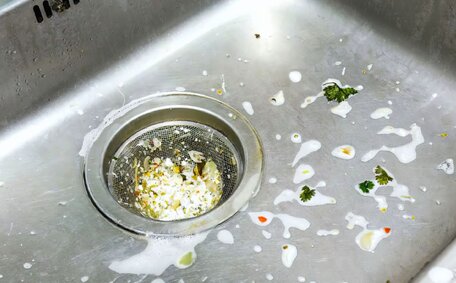Understanding Why Tree Roots Invade and Damage Pipes
Tree roots are naturally attracted to the water and nutrients within your property’s landscape. Roots instinctively grow towards the moisture in sewer lines, especially around homes with abundant tree cover, posing continual challenges. Subterranean root networks extend significant distances, often infiltrating sewer lines and posing a substantial threat to your drainage system.
A large tree in your garden can possess roots that extend up to 1.5 times its height, creating extensive root systems. In their quest for water, some lateral roots can extend beyond 100 metres from the tree’s base. It’s essential to keep your drains nestled 1 to 2 metres beneath the surface as a preemptive measure against root invasion,
As seasons transition, roots drain systems of their efficiency by extending their reach towards tiny cracks, causing blockages in established systems. As these roots expand within your drain pipes, they may cause blockages, pipe fractures, and sewage backups in your home. reducing water pressure and leading to overflows; contact us for preventative measures to avoid expensive repairs.
How Pipe Relining Creates a Physical Barrier Against Future Root Damage
To prevent roots from warping your pipeline, regular drain inspection and pipe relining are savvy trenchless solutions to keep roots at bay in your sewer. This resin coating process can help by creating an impenetrable shield inside such pipe to resist tree root punctures and gaps.
Clay pipes, as well as concrete ones that tree roots infiltrate, are markedly vulnerable to incursions, potentially damaging your drains due to their deterioration-prone nature and plentiful joint gaps. Plastic pipes, like PVC, need regular monitoring as they can sometimes allow roots to intrude through openings or weak connections, emphasizing the importance of safeguarding your sewer lines. Pipe relining strengthens these weak spots within your pipes to block root entry.
The resin used in pipe relining creates a seamless, invulnerable lining that halts root growth and withstands the pressure as they attempt to penetrate your pipes. The firm resin barrier detours roots attempting to penetrate your sewer drain, thus protecting your drainage system. This physical barrier halts invasive growth and protects roots sewer lines from threats of clogs and blockages.
Pipe relining avoids the need for trenching or pipe replacement, offering a robust solution to prevent long-term root infiltration. Proactive measures like regular CCTV drain inspections are crucial for early detection of breaches to ensure the integrity of relined pipes.
Identifying Early Signs of Root Intrusion with Professional Inspections
Identifying warning signs of blockages due to tree roots provides strategic insight for root removal; contact us for professional guidance to prevent costly future repairs. Gradual tree root infiltration is a primary cause of drainage system issues. Should you suspect root intrusion, contacting us promptly can avert significant damage.
A comprehensive CCTV drain inspection can highlight root intrusions early on, preventing severe blockages and possible pipe damage. A plumber uses a drain camera to probe your sewer pipe, allowing the detection of even the smallest root breaches and early intrusions.
During inspections, hydro jetting improves the visibility of finer roots, effectively clearing them from your pipes. Where small roots have found their way in, they can be mechanically cleared out of your systems, effectively resolving blockages and clearing roots out your pipes to prevent further compromises to your drainage.
Regular drain assessments and preventative measures, like using baking soda, help plumbers monitor and prevent root intrusion.
Comparing Pipe Relining and Replacement Costs
Securing against additional tree root damage, homeowners decide between full pipe overhaul or an unobtrusive pipe repair approach like relining. Replacing pipes offers new infrastructure but is typically expensive, costing an average of $5,000 to $10,000, particularly when remedying extensive root damage.
Alternatively, pipe relining involves coating the pipe interior with an epoxy resin barrier, costing between $2,500 to $4,000. This approach mitigates harm to your pipe network without the need for disruptive and costly digging for pipe replacement. Relining also avoids property disruption and ensures the restoration of full hot water flow inside pipes.
Over time, pipe relining saves costs by preventing tree root intrusion and the consequent pipe deterioration. Persistent drain checks remain essential to ensure the barrier remains intact, stopping tree’s root progression.
Homeowners can opt for pipe relining at a lower cost to ensure extended protection against root damage, bypassing the expense and labor involved in complete pipe replacement.
Choosing the Right Plants and Using Root Barriers
Calculated choices regarding how close trees can be, twinned with the implementation of root barriers, can fend off a tree’s underground incursions and safeguard your plumbing system. Some species—such as willows, poplars, elms, and maples—have invasive root systems and are commonly advised against planting near plumbing lines to avoid root interference.
New trees for your garden, such as compact ornamental trees, shrubs, and plants, won’t surpass 3-4 metres at full growth, hence safe for your underground piping. Allow sufficient distance from your drainage infrastructure when you plant trees, at least 3 metres for small shrubs and 5-7 metres for trees.
Installing vertical tree root barriers can bolster security around your yard’s trees, making sure tree roots get steered clear of fragile infrastructure. Such barriers direct root growth downwards, preventing lateral movement and deterring root invasions near pipes. Regular pruning can discourage extensive surface rooting from threatening your infrastructure.
Establishing horizontal root barriers atop pipes can repel encroaching roots, simplifying the task of clearing tree roots from trees in your yard that linger too close to your sewer system’s domain. Combined with pipe relining, These barriers offer long-term protection against further tree root invasions.
Using Safe Chemical Treatments to Stop Root Growth
While chemical root treatments can be effective for controlling tree roots your plumber may need to tackle in pipes, caution must be exercised regarding their use to avoid environmental impacts.
Regarding root killers, foaming agents that contain active ingredients such as copper sulphate thwart root cell growth upon contact. Applied every six to twelve months, these treatments can effectively impede root progression in sewer lines.
It’s important to note that root deterrents with rock salt can permeate soil and water sources, impacting plant life and possibly affecting sewage drainage. Only biodegradable, EPA-registered root deterrents should be used sparingly when necessary.
For a more eco-friendly approach, get touch with a professional plumber who might recommend products made from plant oils or citric acids as safer options.
Ultimately, pipe relining forms a durable physical root barrier, eliminating the need for repeat chemical applications over time. But when combined judiciously as part of scheduled maintenance, approved root deterrents help proactively guard against root growth between relining.
Case Study: Successful Prevention of Further Root Damage
at Jamisontown Plumbing, we recently assisted a property owner in protecting their main sewer from considerable damage when trespassing roots were located. Initial CCTV drain inspections revealed that tree roots from large trees, like an imposing oak, had infiltrated more than 60 metres of piping, demanding action to eliminate the incursion.
To tackle the roots causing issues before they lead to pipe breakdowns or drainage inefficiency, our approach includes not just relining but also ways to remove tree growth intruding into your system. This involved impregnating the drain pipe’s interior with a durable resin barrier, crafting an effective response to ongoing tree root ingress.
Our relining process was highly successful, preventing tree root disruptions and guaranteeing smooth sewage flow. Subsequent camera inspections a year later revealed no new root penetrations or growth within the pipes. By taking early preventive action, the homeowner cleverly avoided emergency blockages, sewage reversals into their home, and substantial expenses that come with a full replacement which can stop tree invasion dead in its tracks.
With the decision to reline your pipes, they gained long-term protection against root damage for a fraction of replacement costs. While routine assessments maintain the pipe lining, this non-intrusive method effectively halts destructive root growth.






